MaryAnn Bernal's Blog, page 163
July 16, 2015
7 weird and wonderful medieval facts
History Extra
To modern minds, the Middle Ages might seem full of alien concepts and circumstances. Now, a new book aims to demystify this complex period in English history, and dispel the modern assumptions that surround it
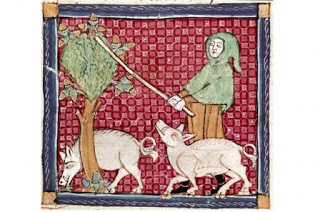 Photo by: Leemage/UIG via Getty Images)
Photo by: Leemage/UIG via Getty Images) In The Middle Ages Unlocked: A Guide to Life in Medieval England, 1050–1300, Dr Gillian Polack and Dr Katrin Kania explore a wide range of topics from law, religion and education to landscape, art and magic. The experts also examine aspects of daily life including housing, food, clothing and crafts.
Here, writing for History Extra, Dr Kania and Dr Polack share seven lesser-known facts about the medieval period…
1) Pigs could be a real dangerIn medieval times, pigs were kept as meat animals, often in a type of extensive husbandry that included foraging in forests and on common grounds. People thus had much more contact with live pigs than we do today – this could be dangerous, and even deadly.
There were multiple accounts of pigs eating children. From the 13th century, lawsuits could in theory be filed against the porcine perpetrators – this usually resulted in a death sentence for the pig. Such lawsuits were rare in England but were more common in France, especially in the region around Paris.
2) The Middle Ages were not drab and greyThere was an appreciation of colour in the medieval period very similar to modern enjoyment of bright and colourful things. From garments to jewellery, and stained glass windows to painted walls in both secular houses and churches, colourful decoration was everywhere.
While many wall paintings have been lost and most textiles have faded or turned brown in the soil (if they survived at all), illuminations in medieval manuscripts still give us a glimpse of the many colours of life in medieval times.
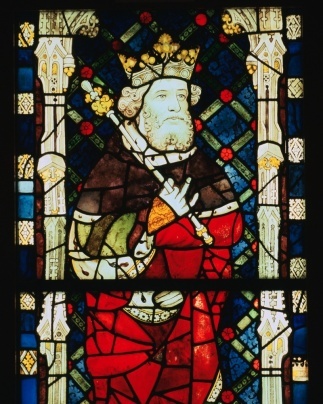
Stained glass window of King Cnut from Canterbury Cathedral, 15th century. (Photo by CM Dixon/Print Collector/Getty Images)
3) The English were multilingualThe medieval English did not only speak English – they used French, Latin and Hebrew, as well as other languages. People employed different languages in different situations: the language of religion was Latin and Hebrew, but for law it was French. When it came to insulting people, however, this could be done in any language.
4) People did batheHygiene was considered a sign that you were civilised, and cleanliness meant bathing. Most major towns boasted public baths, as did many private houses. Bathtubs were made using similar techniques to those used to craft wine barrels.
One might also be advised on medical grounds to bathe – for example, if you had kidney stones.
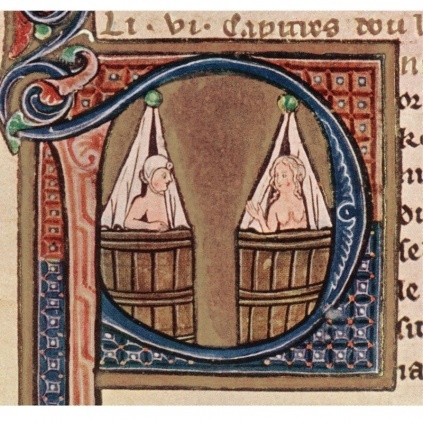
(Photo by Hulton Archive/Getty Images)
5) People knew the world was roundThe round Earth was described both scientifically and philosophically, and people knew about the Antipodes (the antipodes of any place on Earth is the point on the Earth's surface that is diametrically opposite to it). However, as today, a minority believed devoutly in a flat Earth.
6) Not everyone was Christian, or whiteThere were Jews and Muslims in medieval Europe, and there were also practitioners of other religions, such as Paganism. The percentage of followers of each religion in each region varied according to history and culture. Paganism was for a long time common in the north, for instance, and Islam in the Iberian peninsula.
Race wasn’t defined according to modern terms, so ‘white’ and ‘black’ were far less important than one’s religion: a black bishop from north Africa was considered more civilised and of far higher rank than a white slave from eastern Europe, for example. People were more likely to be discriminated against according to religion than skin colour, with Cathars, Jews and known heretics among those who suffered greatly.
7) Piped water was not unknownClean water was important in the medieval period – for hygiene, for food preparation, and for drinking. Establishing a water supply, especially in the cities, was not always easy, though. London was famous for its conduit – a series of cisterns to supply water to its people: the water itself was piped in from outside London.
Some castles also had pipe systems for their water supplies. Dover Castle, for example, used lead pipes to move water from its well through the building.
Dr Gillian Polack and Dr Katrin Kania are the authors of The Middle Ages Unlocked: A Guide to Life in Medieval England, 1050–1300.
Kania is a freelance textile archaeologist and teacher and a published academic who writes in both German and English. Polack is a novelist, editor, medieval historian and lecturer. To find out more, visit www.gillianpolack.com and www.pallia.net, or Katrin’s blog at togs-from-bogs.blogspot.co.uk.
Published on July 16, 2015 07:16
Polish Archaeologists Discover Rare Gift from Father of Cleopatra
Ancient Origins
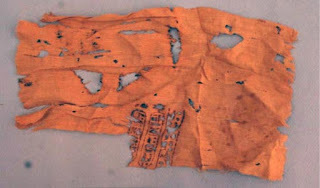 A linen cloth that was once given as a gift by the father of legendary Egyptian Queen Cleopatra VII has been discovered by Polish archaeologists during excavations in Western Thebes, now the modern city of Luxor. The cloth was given to an Egyptian temple.
A linen cloth that was once given as a gift by the father of legendary Egyptian Queen Cleopatra VII has been discovered by Polish archaeologists during excavations in Western Thebes, now the modern city of Luxor. The cloth was given to an Egyptian temple.
The archaeologists were exploring a deep shaft in a tomb belonging to a dignitary from Ancient Egypt’s Middle Kingdom (around 2000 BC). The tomb is located in the necropolis of Sheikh Abd el-Qurna, later occupied by Coptic Christian monks living on the site as hermits during the 6th century AD.
“Probably the monks living in the hermitage, who were bringing everything they could use from the surrounding area, found the canvas in the ruins of a nearby temple and took it with a practical use in mind” Deputy Head of Mission Andrzej Ćwiek told Science In Poland. “We were lucky to discover this unique object.”
Ćwiek is employed by Adam Mickiewicz University and the Archaeological Museum in Poznań. The excavations have been conducted under concessions obtained by the Centre of Mediterranean Archaeology of the University of Warsaw.
Egyptian Alexandria - Ancient underwater finds revealed the Pharaonic roots of the Ptolemaic City Searching for the Lost Tomb of Antony and Cleopatra The dramatic death of Cleopatra – was it really suicide? The linen fragment has a hieroglyphic text painted on it in ink. Two columns of cartouches with ornamental borders surrounding the name of the Pharaoh, Ptolemy XII Auletes (80-51 BC) who was the father of Cleopatra VII. In the 3rd century, a scribe added the name of the goddess Isis. The fragment is from a velum, a curtain that was used to cover a holy image, such as a statue of a deity, in the Temple of Hathor near Deir el-Medina. The velum was probably Ptolemy XII’s gift to the deity, given that his cartouches can be seen on the gate of the temple. According to Dr. Ćwiek, this indicates that the Pharaoh was involved in the creation of the temple. He could have funded temple equipment including the provision of the velum.
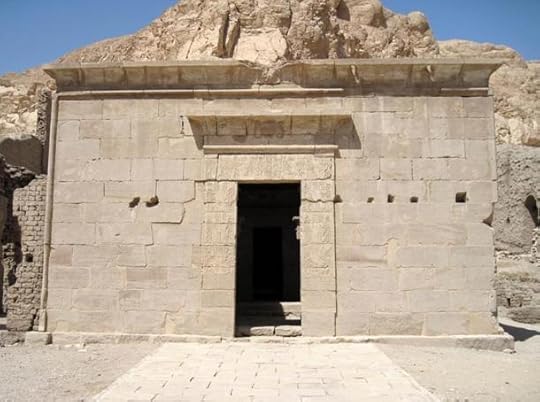 Temple of Hathor, Deir el-Medina (
Wikimedia Commons
)Deir el-Medina is the site of a workman’s village, once used to accommodate workmen employed in the construction of the royal tombs in the famous Valley of the Kings, where the tomb of Tutankhamen is located. Although the temple is primarily dedicated to Hathor, the Egyptian cow goddess, it also has sanctuaries in honor of Amun-Sokar-Osiris and Amun-Re-Osiris – Osiris and Amun or Amun-Re respectively. Osiris was the Egyptian god of the dead and god of the underworld, but he was also a god of fertility and agriculture.
Temple of Hathor, Deir el-Medina (
Wikimedia Commons
)Deir el-Medina is the site of a workman’s village, once used to accommodate workmen employed in the construction of the royal tombs in the famous Valley of the Kings, where the tomb of Tutankhamen is located. Although the temple is primarily dedicated to Hathor, the Egyptian cow goddess, it also has sanctuaries in honor of Amun-Sokar-Osiris and Amun-Re-Osiris – Osiris and Amun or Amun-Re respectively. Osiris was the Egyptian god of the dead and god of the underworld, but he was also a god of fertility and agriculture.
The identification of the item was assisted by Prof. Ewa Laskowska-Kusztal from the Institute of Mediterranean and Oriental Culture PAS.
The archaeologists also found other artifacts among the debris in the shaft, which is several meters deep. These included fragments of mud brick from the Pharaonic and Coptic period, wooden coffins, small faience beads and amulets, and ushebti clay figurines (funerary figures intended to serve the deceased in the afterlife). Large quantities of these figurines were placed in tombs in order to assist the deceased after his death, in accordance with a command by the god Osiris. The investigation is far from over and excavations of the site will continue in February 2016.
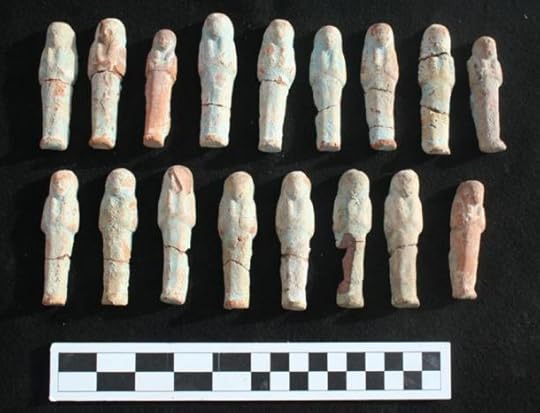 Ushebti clay figurines discovered in the shaft, Luxor, Egypt (
M.
Kaczanowicz
)Cleopatra was the last Ptolemaic ruler of Ancient Egypt. After her death, Egypt became a province of the Roman Empire. The Ptolemaic dynasty was of Macedonian Greek origin. It ruled the country following the death of Alexander The Great in the Hellenistic Period. Although the Ptolemies refused to speak Egyptian, preferring Greek, Cleopatra herself did learn Egyptian and presented herself during her rule as the reincarnation of the goddess Isis, the consort of Osiris. Following the assassination of Julius Caesar, Cleopatra allied herself and Egypt with Marc Antony in opposition to Gaius Julius Caesar Octavianus, later called Augustus. After Antony committed suicide when he lost the Battle of Actium to Octavian, Cleopatra also committed suicide. She had three children: twins, a daughter, Cleopatra Selene II and son, Alexander Helios, and another son, Ptolemy Philadelphus.
Ushebti clay figurines discovered in the shaft, Luxor, Egypt (
M.
Kaczanowicz
)Cleopatra was the last Ptolemaic ruler of Ancient Egypt. After her death, Egypt became a province of the Roman Empire. The Ptolemaic dynasty was of Macedonian Greek origin. It ruled the country following the death of Alexander The Great in the Hellenistic Period. Although the Ptolemies refused to speak Egyptian, preferring Greek, Cleopatra herself did learn Egyptian and presented herself during her rule as the reincarnation of the goddess Isis, the consort of Osiris. Following the assassination of Julius Caesar, Cleopatra allied herself and Egypt with Marc Antony in opposition to Gaius Julius Caesar Octavianus, later called Augustus. After Antony committed suicide when he lost the Battle of Actium to Octavian, Cleopatra also committed suicide. She had three children: twins, a daughter, Cleopatra Selene II and son, Alexander Helios, and another son, Ptolemy Philadelphus.
 Drawing of Cleopatra by Michelangelo (1534) (
Wikimedia Commons
)Cleopatra has been made famous through her depiction in many works of literature and art, from the famous Shakespeare play through to the 1963 Hollywood movie of the same name, Antony and Cleopatra, starring Richard Burton and Elizabeth Taylor.
Drawing of Cleopatra by Michelangelo (1534) (
Wikimedia Commons
)Cleopatra has been made famous through her depiction in many works of literature and art, from the famous Shakespeare play through to the 1963 Hollywood movie of the same name, Antony and Cleopatra, starring Richard Burton and Elizabeth Taylor.
Featured image: Cloth Gifted by Ptolemy XII Auletes to the Temple of Hathor, (A. Ćwiek)
 A linen cloth that was once given as a gift by the father of legendary Egyptian Queen Cleopatra VII has been discovered by Polish archaeologists during excavations in Western Thebes, now the modern city of Luxor. The cloth was given to an Egyptian temple.
A linen cloth that was once given as a gift by the father of legendary Egyptian Queen Cleopatra VII has been discovered by Polish archaeologists during excavations in Western Thebes, now the modern city of Luxor. The cloth was given to an Egyptian temple.The archaeologists were exploring a deep shaft in a tomb belonging to a dignitary from Ancient Egypt’s Middle Kingdom (around 2000 BC). The tomb is located in the necropolis of Sheikh Abd el-Qurna, later occupied by Coptic Christian monks living on the site as hermits during the 6th century AD.
“Probably the monks living in the hermitage, who were bringing everything they could use from the surrounding area, found the canvas in the ruins of a nearby temple and took it with a practical use in mind” Deputy Head of Mission Andrzej Ćwiek told Science In Poland. “We were lucky to discover this unique object.”
Ćwiek is employed by Adam Mickiewicz University and the Archaeological Museum in Poznań. The excavations have been conducted under concessions obtained by the Centre of Mediterranean Archaeology of the University of Warsaw.
Egyptian Alexandria - Ancient underwater finds revealed the Pharaonic roots of the Ptolemaic City Searching for the Lost Tomb of Antony and Cleopatra The dramatic death of Cleopatra – was it really suicide? The linen fragment has a hieroglyphic text painted on it in ink. Two columns of cartouches with ornamental borders surrounding the name of the Pharaoh, Ptolemy XII Auletes (80-51 BC) who was the father of Cleopatra VII. In the 3rd century, a scribe added the name of the goddess Isis. The fragment is from a velum, a curtain that was used to cover a holy image, such as a statue of a deity, in the Temple of Hathor near Deir el-Medina. The velum was probably Ptolemy XII’s gift to the deity, given that his cartouches can be seen on the gate of the temple. According to Dr. Ćwiek, this indicates that the Pharaoh was involved in the creation of the temple. He could have funded temple equipment including the provision of the velum.
 Temple of Hathor, Deir el-Medina (
Wikimedia Commons
)Deir el-Medina is the site of a workman’s village, once used to accommodate workmen employed in the construction of the royal tombs in the famous Valley of the Kings, where the tomb of Tutankhamen is located. Although the temple is primarily dedicated to Hathor, the Egyptian cow goddess, it also has sanctuaries in honor of Amun-Sokar-Osiris and Amun-Re-Osiris – Osiris and Amun or Amun-Re respectively. Osiris was the Egyptian god of the dead and god of the underworld, but he was also a god of fertility and agriculture.
Temple of Hathor, Deir el-Medina (
Wikimedia Commons
)Deir el-Medina is the site of a workman’s village, once used to accommodate workmen employed in the construction of the royal tombs in the famous Valley of the Kings, where the tomb of Tutankhamen is located. Although the temple is primarily dedicated to Hathor, the Egyptian cow goddess, it also has sanctuaries in honor of Amun-Sokar-Osiris and Amun-Re-Osiris – Osiris and Amun or Amun-Re respectively. Osiris was the Egyptian god of the dead and god of the underworld, but he was also a god of fertility and agriculture.The identification of the item was assisted by Prof. Ewa Laskowska-Kusztal from the Institute of Mediterranean and Oriental Culture PAS.
The archaeologists also found other artifacts among the debris in the shaft, which is several meters deep. These included fragments of mud brick from the Pharaonic and Coptic period, wooden coffins, small faience beads and amulets, and ushebti clay figurines (funerary figures intended to serve the deceased in the afterlife). Large quantities of these figurines were placed in tombs in order to assist the deceased after his death, in accordance with a command by the god Osiris. The investigation is far from over and excavations of the site will continue in February 2016.
 Ushebti clay figurines discovered in the shaft, Luxor, Egypt (
M.
Kaczanowicz
)Cleopatra was the last Ptolemaic ruler of Ancient Egypt. After her death, Egypt became a province of the Roman Empire. The Ptolemaic dynasty was of Macedonian Greek origin. It ruled the country following the death of Alexander The Great in the Hellenistic Period. Although the Ptolemies refused to speak Egyptian, preferring Greek, Cleopatra herself did learn Egyptian and presented herself during her rule as the reincarnation of the goddess Isis, the consort of Osiris. Following the assassination of Julius Caesar, Cleopatra allied herself and Egypt with Marc Antony in opposition to Gaius Julius Caesar Octavianus, later called Augustus. After Antony committed suicide when he lost the Battle of Actium to Octavian, Cleopatra also committed suicide. She had three children: twins, a daughter, Cleopatra Selene II and son, Alexander Helios, and another son, Ptolemy Philadelphus.
Ushebti clay figurines discovered in the shaft, Luxor, Egypt (
M.
Kaczanowicz
)Cleopatra was the last Ptolemaic ruler of Ancient Egypt. After her death, Egypt became a province of the Roman Empire. The Ptolemaic dynasty was of Macedonian Greek origin. It ruled the country following the death of Alexander The Great in the Hellenistic Period. Although the Ptolemies refused to speak Egyptian, preferring Greek, Cleopatra herself did learn Egyptian and presented herself during her rule as the reincarnation of the goddess Isis, the consort of Osiris. Following the assassination of Julius Caesar, Cleopatra allied herself and Egypt with Marc Antony in opposition to Gaius Julius Caesar Octavianus, later called Augustus. After Antony committed suicide when he lost the Battle of Actium to Octavian, Cleopatra also committed suicide. She had three children: twins, a daughter, Cleopatra Selene II and son, Alexander Helios, and another son, Ptolemy Philadelphus. Drawing of Cleopatra by Michelangelo (1534) (
Wikimedia Commons
)Cleopatra has been made famous through her depiction in many works of literature and art, from the famous Shakespeare play through to the 1963 Hollywood movie of the same name, Antony and Cleopatra, starring Richard Burton and Elizabeth Taylor.
Drawing of Cleopatra by Michelangelo (1534) (
Wikimedia Commons
)Cleopatra has been made famous through her depiction in many works of literature and art, from the famous Shakespeare play through to the 1963 Hollywood movie of the same name, Antony and Cleopatra, starring Richard Burton and Elizabeth Taylor.Featured image: Cloth Gifted by Ptolemy XII Auletes to the Temple of Hathor, (A. Ćwiek)
Published on July 16, 2015 07:10
Archeologists discover Ancient Celtic village with more than 150 roundhouses
Ancient Origins
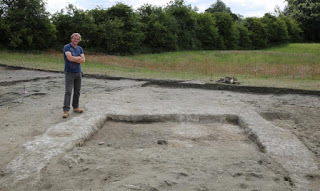 Archaeologists and students from Bournemouth University in England have unearthed an ancient Celtic village at Duropolis, which is named after the Celtic Iron Age Durotriges tribe that lived in the settlement in the 1st century BC. The remains of 16 roundhouses have been unearthed and more than 150 other roundhouses have been identified through geophysical surveys. It is one of the earliest and largest open settlements ever unearthed in Britain.
Archaeologists and students from Bournemouth University in England have unearthed an ancient Celtic village at Duropolis, which is named after the Celtic Iron Age Durotriges tribe that lived in the settlement in the 1st century BC. The remains of 16 roundhouses have been unearthed and more than 150 other roundhouses have been identified through geophysical surveys. It is one of the earliest and largest open settlements ever unearthed in Britain.
The students unearthed the previously unknown village in East Dorset in southern England, as part of their studies this year. It is customary for university students from many institutions around the world to go on digs as part of the archaeology curriculum.
“The Durotriges Big Dig, hosted yearly by Bournemouth University, gives students a hands-on experience with a live archaeological site. In previous years, students have uncovered Roman villas and skeletal remains, as well as a host of archaeological artefacts,” says a press release from the university.
Researchers hope the dig will reveal what the fate was of inhabitants of Maiden Castle when they moved out of that hill fort about 2,100 years ago.
This settlement is among the largest found in Britain from before the Roman invasion of the 1st century AD. The village appears to differ from other settlements of the time because it's not in a hilltop fort and it didn't even have defensive palisades. Archaeologists leading the dig hope it will give some insight into life in that part of Britain before the invasion.
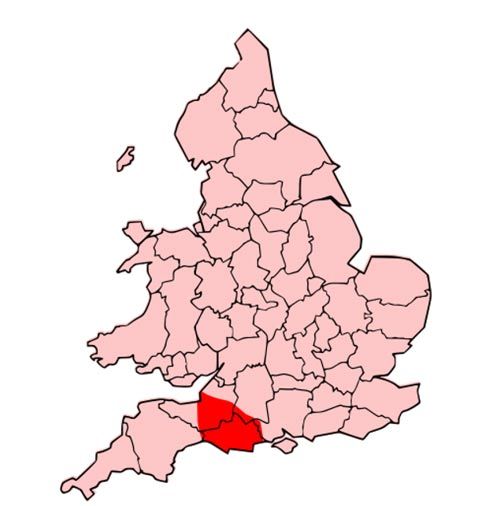 The boundaries of England and Wales; the territory of the Durotriges tribe is overlaid in red. (Map by Jbp1201/
Wikimedia Commons
)
The boundaries of England and Wales; the territory of the Durotriges tribe is overlaid in red. (Map by Jbp1201/
Wikimedia Commons
)
“We’ve exposed remains of 16 roundhouses in the two trenches we’ve dug,” said archaeologist Miles Russell of Bournemouth University, co-director of the dig. “They are pre-Roman house structures, the last that inhabitants would have been living in before the Romans arrived. We know that there are around 200 of these across this area, so we’ve got ourselves a prehistoric town or proto-urban settlement. What we’ve discovered is extremely significant for the whole of Southern Britain because in the past archaeologists have tended to look at really obvious sites, like the big hill-fort of Maiden Castle near Dorchester. What we have here is an extensive open settlement, not a hill fort, so it wasn’t visible as a settlement from the earthwork on the landscape. What we’ve discovered is one of the earliest and largest open settlements in Britain.”
Paul Cheetham, the other co-director and also an archaeologist at the university said:
The Celtic inhabitants of the small, industrious Iron Age settlement apparently sacrificed the young woman by slitting her throat and then buried her body in a curious arrangement of animal bones. Her head rested on animal-skull fragments, and her legs rested on animal leg-bones.
The team is also excavating other burials of hybrid animal bones at the site that recall myths from the Mediterranean and Near East about bird-woman harpies, goat-lion chimeras, eagle-lion griffins, man-goat satyrs, man-bull minotaurs and man-horse centaurs. Ancient peoples imagined combining various animal and/or human parts into one fantastic and sometimes grotesque beings. Some were understood as monsters, others as wise counselors or guardians of shepherds and the countryside.
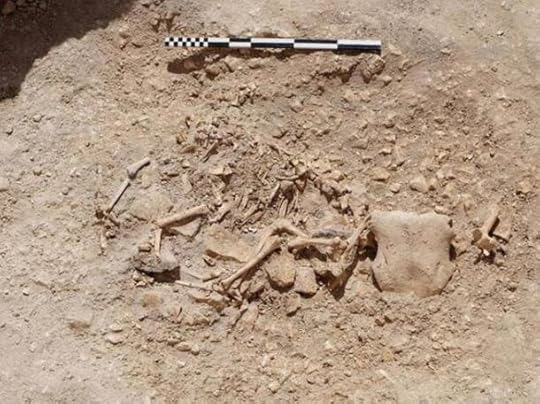 A sheep with its own head that was fragmentary plus the head of a bull on its rear end has been excavated along with other animal combinations at a farm in Dorset, England.“The discoveries are helping to transform our understanding of key aspects of Late Iron Age Britain – the type of society that existed just a couple of generations before the Roman conquest,” said Russell.
A sheep with its own head that was fragmentary plus the head of a bull on its rear end has been excavated along with other animal combinations at a farm in Dorset, England.“The discoveries are helping to transform our understanding of key aspects of Late Iron Age Britain – the type of society that existed just a couple of generations before the Roman conquest,” said Russell.
 Archaeologists and students from Bournemouth University in England have unearthed an ancient Celtic village at Duropolis, which is named after the Celtic Iron Age Durotriges tribe that lived in the settlement in the 1st century BC. The remains of 16 roundhouses have been unearthed and more than 150 other roundhouses have been identified through geophysical surveys. It is one of the earliest and largest open settlements ever unearthed in Britain.
Archaeologists and students from Bournemouth University in England have unearthed an ancient Celtic village at Duropolis, which is named after the Celtic Iron Age Durotriges tribe that lived in the settlement in the 1st century BC. The remains of 16 roundhouses have been unearthed and more than 150 other roundhouses have been identified through geophysical surveys. It is one of the earliest and largest open settlements ever unearthed in Britain.The students unearthed the previously unknown village in East Dorset in southern England, as part of their studies this year. It is customary for university students from many institutions around the world to go on digs as part of the archaeology curriculum.
“The Durotriges Big Dig, hosted yearly by Bournemouth University, gives students a hands-on experience with a live archaeological site. In previous years, students have uncovered Roman villas and skeletal remains, as well as a host of archaeological artefacts,” says a press release from the university.
Researchers hope the dig will reveal what the fate was of inhabitants of Maiden Castle when they moved out of that hill fort about 2,100 years ago.
This settlement is among the largest found in Britain from before the Roman invasion of the 1st century AD. The village appears to differ from other settlements of the time because it's not in a hilltop fort and it didn't even have defensive palisades. Archaeologists leading the dig hope it will give some insight into life in that part of Britain before the invasion.
 The boundaries of England and Wales; the territory of the Durotriges tribe is overlaid in red. (Map by Jbp1201/
Wikimedia Commons
)
The boundaries of England and Wales; the territory of the Durotriges tribe is overlaid in red. (Map by Jbp1201/
Wikimedia Commons
)“We’ve exposed remains of 16 roundhouses in the two trenches we’ve dug,” said archaeologist Miles Russell of Bournemouth University, co-director of the dig. “They are pre-Roman house structures, the last that inhabitants would have been living in before the Romans arrived. We know that there are around 200 of these across this area, so we’ve got ourselves a prehistoric town or proto-urban settlement. What we’ve discovered is extremely significant for the whole of Southern Britain because in the past archaeologists have tended to look at really obvious sites, like the big hill-fort of Maiden Castle near Dorchester. What we have here is an extensive open settlement, not a hill fort, so it wasn’t visible as a settlement from the earthwork on the landscape. What we’ve discovered is one of the earliest and largest open settlements in Britain.”
Paul Cheetham, the other co-director and also an archaeologist at the university said:
“What this suggests is that there are other big centres of occupation before the Roman arrival, this is a big open settlement, probably one of the first that the Romans encountered when they arrived. It exposes the myth that everyone lived in protected hill forts – these inhabitants lived in this fertile farmland, away from the traditional hill forts we are all used to hearing about.”In addition to the roundhouses, students have excavated animals bones buried in strangely combined configurations, including with a woman who'd apparently been sacrificed, which made news earlier this month. They've found quern stones used for grinding, spindle whorls used for weaving and evidence of working in iron, copper and lead.
The Celtic inhabitants of the small, industrious Iron Age settlement apparently sacrificed the young woman by slitting her throat and then buried her body in a curious arrangement of animal bones. Her head rested on animal-skull fragments, and her legs rested on animal leg-bones.
The team is also excavating other burials of hybrid animal bones at the site that recall myths from the Mediterranean and Near East about bird-woman harpies, goat-lion chimeras, eagle-lion griffins, man-goat satyrs, man-bull minotaurs and man-horse centaurs. Ancient peoples imagined combining various animal and/or human parts into one fantastic and sometimes grotesque beings. Some were understood as monsters, others as wise counselors or guardians of shepherds and the countryside.
 A sheep with its own head that was fragmentary plus the head of a bull on its rear end has been excavated along with other animal combinations at a farm in Dorset, England.“The discoveries are helping to transform our understanding of key aspects of Late Iron Age Britain – the type of society that existed just a couple of generations before the Roman conquest,” said Russell.
A sheep with its own head that was fragmentary plus the head of a bull on its rear end has been excavated along with other animal combinations at a farm in Dorset, England.“The discoveries are helping to transform our understanding of key aspects of Late Iron Age Britain – the type of society that existed just a couple of generations before the Roman conquest,” said Russell.“Our investigations at the site suggest that life there was peaceful and prosperous. Although the settlement was relatively large, there appears to have been no defensive palisade or ramparts. The sacrifice of so many animals and the unusual treatment of their bones is likely to shed totally new light on Iron Age belief systems – and may suggest that the Ancient Britons had beliefs or mythologies which involved hybridized animals, just as the ancient Greeks had.”Featured image: Archaeological dig site near Winterborne Kingston in Dorset. Credit: Bournemouth University.
Published on July 16, 2015 07:02
History Trivia - Coronation of Richard II of England
July 16,
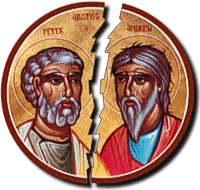
1054 Three Roman legates broke relations between Western and Eastern Christian Churches through the act of placing an invalidly-issued Papal Bull of Excommunication on the altar of Hagia Sophia during Saturday afternoon divine liturgy. Historians frequently describe the event as the start of the East-West Schism.
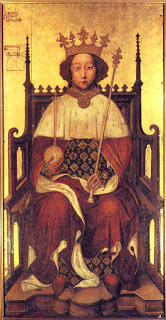
1377 Coronation of Richard II of England. Richard was a son of Edward, the Black Prince and was born during the reign of his grandfather, Edward III.

1439 Kissing was banned in England to stop germs from spreading.

1054 Three Roman legates broke relations between Western and Eastern Christian Churches through the act of placing an invalidly-issued Papal Bull of Excommunication on the altar of Hagia Sophia during Saturday afternoon divine liturgy. Historians frequently describe the event as the start of the East-West Schism.

1377 Coronation of Richard II of England. Richard was a son of Edward, the Black Prince and was born during the reign of his grandfather, Edward III.

1439 Kissing was banned in England to stop germs from spreading.
Published on July 16, 2015 02:00
July 15, 2015
Attention Everville Fans - Win an Amazon Gift Card - promo running through July 19, 2015
Follow, RT&reply 2 this tweet 4
#
FREE
Exclusive entry 2 win a $25
#
Amazon
Gift Card Promo ends 11:59 PM Pacific 7/19 http://bookgoodies.com/a/B00WWO1CC2
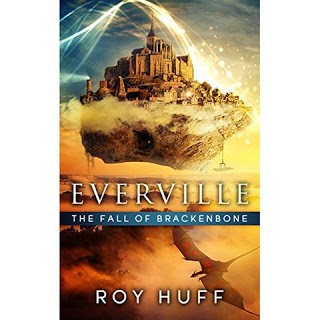 Everville: The Fall of Brackenbone
Everville: The Fall of Brackenbone
By Amazon Ancient civilizations, parallel worlds, aliens, time travel, epic fantasy, dragons and college! Books #3 and #4 in the best-selling, award-winning Everville series can be read as stand alone novels and have it all for teens, new adults, and all ages alike.
Follow Roy Huff on Twitter
 Everville: The Fall of Brackenbone
Everville: The Fall of Brackenbone By Amazon Ancient civilizations, parallel worlds, aliens, time travel, epic fantasy, dragons and college! Books #3 and #4 in the best-selling, award-winning Everville series can be read as stand alone novels and have it all for teens, new adults, and all ages alike.
Follow Roy Huff on Twitter
Published on July 15, 2015 09:42
Sword of Late Viking Age Burial Unveiled Exhibiting Links Between Norway and England
Ancient Origins
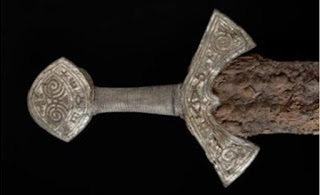 Though they discovered it in 2011, archaeologists from the Museum of Cultural History in Oslo had to wait through four long years of conservation and research to finally reveal the finding of a unique Late Viking Age sword excavated at a burial ground in Langeid, Norway, with mysterious links to England.
Though they discovered it in 2011, archaeologists from the Museum of Cultural History in Oslo had to wait through four long years of conservation and research to finally reveal the finding of a unique Late Viking Age sword excavated at a burial ground in Langeid, Norway, with mysterious links to England.
The site's lead excavator, Camilla Cecillie Wenn, told Live Science that she knew that they would find something special during excavation because in the burial grounds there was one grave that was different. It was much larger than the other 20 graves found at the site. But it wasn't only the size that indicated a special grave - the post holes (suggesting a roof over the grave) in the four corners surrounding the grave provided a clear clue to something special waiting beneath.
However, the archaeologists lost some hope as they began to dig in search of the coffin and only found fragments of two silver coins. While the coins were somewhat interesting - one with embossing suggesting it was from the German Viking Age and the other a penny from the time of Ethelred II in England (978-1016 AD), it was not what they were expecting.
Thus, Camilla Cecillie Wenn and her team continued searching even after they reached the coffin. As she explained in a press release of the University of Oslo: "But when we went on digging outside the coffin, our eyes really popped. Along both sides, something metal appeared, but it was hard to see what it was. Suddenly a lump of earth fell to one side so that the object became clearer. Our pulses raced when we realised it was the hilt of a sword!"
That wasn't the end of the story however, as the team searched the other side of the coffin they also found more metal - a big battle-axe. Many questions arise from these weapons, in no particular order, one wonders: Why were they placed alongside the coffin? Who did they belong to? When and where are they from? The archaeologists and conservators at the Museum of Cultural History have been working hard for the last four years to try to answer these questions.
A Step Closer to the Mysterious Origin of the Viking Sword Ulfberht Ten Legendary Swords from the Ancient World Mysterious Viking Sword Made With Technology From the Future? The archaeologists suggest that the placement may be to protect the corpse from enemies or, more likely, as a means to show the power and prestige of the dead body.
By dating some carbon from one of the post holes they were able to link the burial to the year 1030, which also makes sense due to the English coin discovered above the coffin.
Swords were undoubtedly seen as prestigious adornments and weapons during the Viking Age, and certainly a more ornate a sword would be a visible image of social status.
The Norse sagas also emphasize the importance of an elaborate sword. The mythical sagas speak of magical swords made by the dwarves. As the process to create a well-made sword would have been difficult, there was a sense of mystery and magic that surrounded beautiful weaponry.
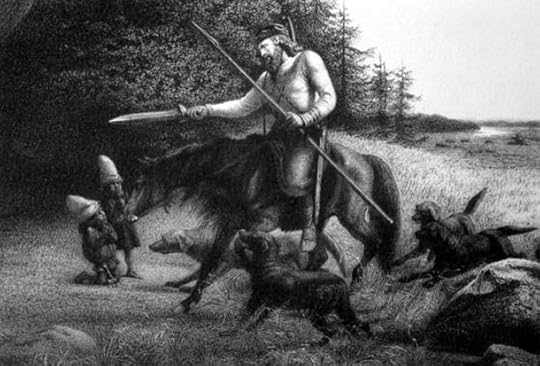 King Svafrlame Secures the Dwarven-made magical Sword Tyrfing of Norse mythology from the Poetic Edda (1906) V. Rydberg (
Wikimedia Commons
)As Hanne Lovise, the author of a recent article on ornate Viking Age swords told Live Science, "[...] swords are referred to as aesthetic, powerful and magical objects. The many similarities between the descriptions of swords in Norse and Medieval literature suggest that the splendor of the sword in the latter had roots in the Viking notions of the symbolic power, magic and ritual aspects of the ornate sword... There is much to suggest that these magnificent swords were such objects, reflecting the status and power of the warrior and his clan."
King Svafrlame Secures the Dwarven-made magical Sword Tyrfing of Norse mythology from the Poetic Edda (1906) V. Rydberg (
Wikimedia Commons
)As Hanne Lovise, the author of a recent article on ornate Viking Age swords told Live Science, "[...] swords are referred to as aesthetic, powerful and magical objects. The many similarities between the descriptions of swords in Norse and Medieval literature suggest that the splendor of the sword in the latter had roots in the Viking notions of the symbolic power, magic and ritual aspects of the ornate sword... There is much to suggest that these magnificent swords were such objects, reflecting the status and power of the warrior and his clan."
The sword discovered at Langeid is 94 cm ( inches) long, and despite the rusted iron blade, the handle of the sword has been well-preserved. It was undoubtedly owned by a wealthy person, due to the silver threads entwining the handle and silver and gold details on the hilt with copper alloy thread edging. The sword decoration includes spirals, Latin letters (with a grouping that remains a mystery), and most surprising is the image depicted at the top of the pommel: a hand holding a cross.
The 10th century chronicle of the violent, orgiastic funeral of a Viking chieftain Durandal - The legendary Sword of Roland Oldest crucible steel weapon in Europe unearthed in Russia Full image of the Viking sword, Langeid, Norway (
Ellen C. Holthe/Museum of Cultural History, University of Oslo
)"That's unique and we don't know of any similar findings on other swords from the Viking Age. Both the hand and the letters indicate that the sword was deliberately decorated with Christian symbolism," Camilla Cecillie Wenn told Live Science. She believes that this treasure of a sword may have been created in a foreign land and exported to Norway by a very important man.
Full image of the Viking sword, Langeid, Norway (
Ellen C. Holthe/Museum of Cultural History, University of Oslo
)"That's unique and we don't know of any similar findings on other swords from the Viking Age. Both the hand and the letters indicate that the sword was deliberately decorated with Christian symbolism," Camilla Cecillie Wenn told Live Science. She believes that this treasure of a sword may have been created in a foreign land and exported to Norway by a very important man.
The axe found alongside the burial also suggests a connection between the buried body and England. The style of the axe with its brass/coated shaft, was very rare in Norway. However, it corresponds well with axes found by the River Thames in London. The dating of the axe also relates well with the axes found in England by the Thames.
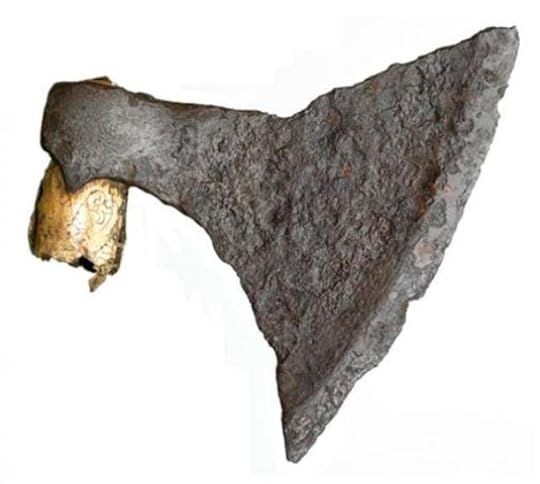 Saxo-Norman/Viking Iron & Copper alloy Battle Axe (11th Century), from battle by the River Thames, London, England
(
Museum of London
)
Piecing together the evidence of the dating, the English coin, the foreign-made sword and the Thames like axe from the burial, project leader Zanette Glørstad suggests that the burial may be of one of Danish King Canute's warriors from the battles with the English King Ethelred. She is tempted to even suggest it may be the burial of the legendary warrior Bjor or his father Arnstein.
Saxo-Norman/Viking Iron & Copper alloy Battle Axe (11th Century), from battle by the River Thames, London, England
(
Museum of London
)
Piecing together the evidence of the dating, the English coin, the foreign-made sword and the Thames like axe from the burial, project leader Zanette Glørstad suggests that the burial may be of one of Danish King Canute's warriors from the battles with the English King Ethelred. She is tempted to even suggest it may be the burial of the legendary warrior Bjor or his father Arnstein.
Although this special find may have taken some years to make a public appearance, it has finally come to light in an exhibition called "Take it Personally" focusing on personal adornments. As the sword had such a large role in adorning and creating the presence and image of a Viking-Age warrior, it is a suitable choice to debut it at this time.
Featured Image: Handle of newly revealed Viking sword, Langeid, Norway ( Ellen C. Holthe, Museum of Cultural History, University of Oslo )
 Though they discovered it in 2011, archaeologists from the Museum of Cultural History in Oslo had to wait through four long years of conservation and research to finally reveal the finding of a unique Late Viking Age sword excavated at a burial ground in Langeid, Norway, with mysterious links to England.
Though they discovered it in 2011, archaeologists from the Museum of Cultural History in Oslo had to wait through four long years of conservation and research to finally reveal the finding of a unique Late Viking Age sword excavated at a burial ground in Langeid, Norway, with mysterious links to England.The site's lead excavator, Camilla Cecillie Wenn, told Live Science that she knew that they would find something special during excavation because in the burial grounds there was one grave that was different. It was much larger than the other 20 graves found at the site. But it wasn't only the size that indicated a special grave - the post holes (suggesting a roof over the grave) in the four corners surrounding the grave provided a clear clue to something special waiting beneath.
However, the archaeologists lost some hope as they began to dig in search of the coffin and only found fragments of two silver coins. While the coins were somewhat interesting - one with embossing suggesting it was from the German Viking Age and the other a penny from the time of Ethelred II in England (978-1016 AD), it was not what they were expecting.
Thus, Camilla Cecillie Wenn and her team continued searching even after they reached the coffin. As she explained in a press release of the University of Oslo: "But when we went on digging outside the coffin, our eyes really popped. Along both sides, something metal appeared, but it was hard to see what it was. Suddenly a lump of earth fell to one side so that the object became clearer. Our pulses raced when we realised it was the hilt of a sword!"
That wasn't the end of the story however, as the team searched the other side of the coffin they also found more metal - a big battle-axe. Many questions arise from these weapons, in no particular order, one wonders: Why were they placed alongside the coffin? Who did they belong to? When and where are they from? The archaeologists and conservators at the Museum of Cultural History have been working hard for the last four years to try to answer these questions.
A Step Closer to the Mysterious Origin of the Viking Sword Ulfberht Ten Legendary Swords from the Ancient World Mysterious Viking Sword Made With Technology From the Future? The archaeologists suggest that the placement may be to protect the corpse from enemies or, more likely, as a means to show the power and prestige of the dead body.
By dating some carbon from one of the post holes they were able to link the burial to the year 1030, which also makes sense due to the English coin discovered above the coffin.
Swords were undoubtedly seen as prestigious adornments and weapons during the Viking Age, and certainly a more ornate a sword would be a visible image of social status.
The Norse sagas also emphasize the importance of an elaborate sword. The mythical sagas speak of magical swords made by the dwarves. As the process to create a well-made sword would have been difficult, there was a sense of mystery and magic that surrounded beautiful weaponry.
 King Svafrlame Secures the Dwarven-made magical Sword Tyrfing of Norse mythology from the Poetic Edda (1906) V. Rydberg (
Wikimedia Commons
)As Hanne Lovise, the author of a recent article on ornate Viking Age swords told Live Science, "[...] swords are referred to as aesthetic, powerful and magical objects. The many similarities between the descriptions of swords in Norse and Medieval literature suggest that the splendor of the sword in the latter had roots in the Viking notions of the symbolic power, magic and ritual aspects of the ornate sword... There is much to suggest that these magnificent swords were such objects, reflecting the status and power of the warrior and his clan."
King Svafrlame Secures the Dwarven-made magical Sword Tyrfing of Norse mythology from the Poetic Edda (1906) V. Rydberg (
Wikimedia Commons
)As Hanne Lovise, the author of a recent article on ornate Viking Age swords told Live Science, "[...] swords are referred to as aesthetic, powerful and magical objects. The many similarities between the descriptions of swords in Norse and Medieval literature suggest that the splendor of the sword in the latter had roots in the Viking notions of the symbolic power, magic and ritual aspects of the ornate sword... There is much to suggest that these magnificent swords were such objects, reflecting the status and power of the warrior and his clan."The sword discovered at Langeid is 94 cm ( inches) long, and despite the rusted iron blade, the handle of the sword has been well-preserved. It was undoubtedly owned by a wealthy person, due to the silver threads entwining the handle and silver and gold details on the hilt with copper alloy thread edging. The sword decoration includes spirals, Latin letters (with a grouping that remains a mystery), and most surprising is the image depicted at the top of the pommel: a hand holding a cross.
The 10th century chronicle of the violent, orgiastic funeral of a Viking chieftain Durandal - The legendary Sword of Roland Oldest crucible steel weapon in Europe unearthed in Russia
 Full image of the Viking sword, Langeid, Norway (
Ellen C. Holthe/Museum of Cultural History, University of Oslo
)"That's unique and we don't know of any similar findings on other swords from the Viking Age. Both the hand and the letters indicate that the sword was deliberately decorated with Christian symbolism," Camilla Cecillie Wenn told Live Science. She believes that this treasure of a sword may have been created in a foreign land and exported to Norway by a very important man.
Full image of the Viking sword, Langeid, Norway (
Ellen C. Holthe/Museum of Cultural History, University of Oslo
)"That's unique and we don't know of any similar findings on other swords from the Viking Age. Both the hand and the letters indicate that the sword was deliberately decorated with Christian symbolism," Camilla Cecillie Wenn told Live Science. She believes that this treasure of a sword may have been created in a foreign land and exported to Norway by a very important man.The axe found alongside the burial also suggests a connection between the buried body and England. The style of the axe with its brass/coated shaft, was very rare in Norway. However, it corresponds well with axes found by the River Thames in London. The dating of the axe also relates well with the axes found in England by the Thames.
 Saxo-Norman/Viking Iron & Copper alloy Battle Axe (11th Century), from battle by the River Thames, London, England
(
Museum of London
)
Piecing together the evidence of the dating, the English coin, the foreign-made sword and the Thames like axe from the burial, project leader Zanette Glørstad suggests that the burial may be of one of Danish King Canute's warriors from the battles with the English King Ethelred. She is tempted to even suggest it may be the burial of the legendary warrior Bjor or his father Arnstein.
Saxo-Norman/Viking Iron & Copper alloy Battle Axe (11th Century), from battle by the River Thames, London, England
(
Museum of London
)
Piecing together the evidence of the dating, the English coin, the foreign-made sword and the Thames like axe from the burial, project leader Zanette Glørstad suggests that the burial may be of one of Danish King Canute's warriors from the battles with the English King Ethelred. She is tempted to even suggest it may be the burial of the legendary warrior Bjor or his father Arnstein.Although this special find may have taken some years to make a public appearance, it has finally come to light in an exhibition called "Take it Personally" focusing on personal adornments. As the sword had such a large role in adorning and creating the presence and image of a Viking-Age warrior, it is a suitable choice to debut it at this time.
Featured Image: Handle of newly revealed Viking sword, Langeid, Norway ( Ellen C. Holthe, Museum of Cultural History, University of Oslo )
Published on July 15, 2015 09:06
4,400-year-old ruins found near ceremonial site may be the oldest house ever found in Britain
Ancient Origins
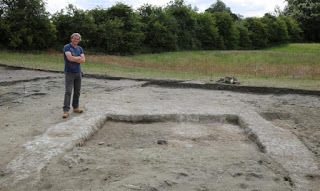 Archaeologists are excavating the remnants of a house up to 4,400-years old on the site of Marden Henge, England, which lies halfway between the World Heritage Sites of Stonehenge and Avebury. Marden, about which little is known, is the largest and one of the most important ancient ceremonial sites in Britain, researchers say. The house is thought to be one of the oldest homes ever unearthed in the country.
Archaeologists are excavating the remnants of a house up to 4,400-years old on the site of Marden Henge, England, which lies halfway between the World Heritage Sites of Stonehenge and Avebury. Marden, about which little is known, is the largest and one of the most important ancient ceremonial sites in Britain, researchers say. The house is thought to be one of the oldest homes ever unearthed in the country.
"Marden Henge is located on a line which connects Stonehenge and Avebury,” said lead archaeologist Jim Leary in a press release from the University of Reading in England. “This poses some fascinating questions. Were the three monuments competing against each other? Or were they used by the same communities but for different occasions and ceremonies? We hope to find out."
Two amateur archaeologists, Sir Richard Colt Hoare and William Cunnington, dug a shaft into a huge burial mound in the early 1800s. They didn't close the shaft, perhaps meaning to return to it. But the entire mound collapsed, and all that remains there is a 3 cm rise in the ground. A farmer later filled in a moat that had surrounded the barrow.
Henge of the World Elevated Origins: Radical new theory suggests Stonehenge was base of an above-ground celestial altar Fifteen previously unknown monuments discovered underground in Stonehenge landscape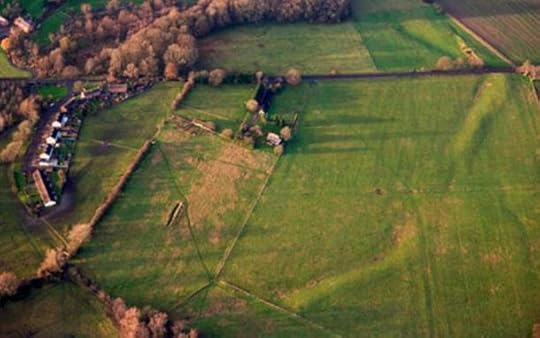 The site of Marden Henge in Wiltshire (
Snip View
)“Their scrappy records torment the modern archaeologists, including references to animal bones, burned wood, and 'two small parcels of burned human bones,” says The Guardian.
The site of Marden Henge in Wiltshire (
Snip View
)“Their scrappy records torment the modern archaeologists, including references to animal bones, burned wood, and 'two small parcels of burned human bones,” says The Guardian.
This latest excavation and research project, which will explore and record the huge site, will take place over three years.
“Built around 2400 BC ‘Marden' is the largest henge in the country and one of Britain's most important but least understood prehistoric monuments,” the Reading press release says. “Excavation within the Henge will focus on the surface of what is thought to be one of the oldest houses in Britain, a Neolithic building revealed during earlier excavations. The people who used this building will have seen Stonehenge in full swing, perhaps even helped to haul the huge stones upright.”
Peary is quoted in the press release as saying: “This excavation is the beginning of a new chapter in the story of Stonehenge and its surrounds. The Vale of Pewsey is a relatively untouched archaeological treasure-chest under the shadow of one of the wonders of the world. Why Stonehenge was built remains a mystery. How the giant stones were transported almost defy belief. It must have been an astonishing, perhaps frightening, sight. Using the latest survey, excavation and scientific techniques, the project will reveal priceless insight into the lives of those who witnessed its construction.”
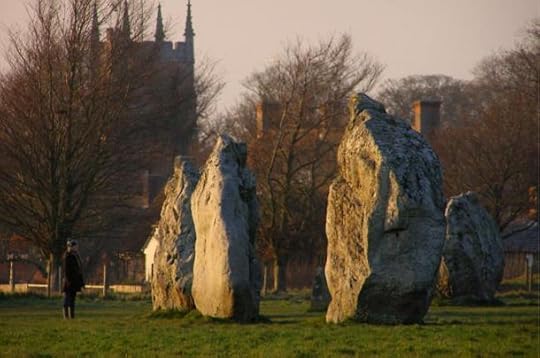 Some of the standing stones at Avebury (Photo by Jim Champion/
Wikimedia Commons
)As part of Britain's national festival of archaeology, visitors will be allowed to tour the site on July 18. They will see one of the best-preserved homes from that period of about 4,400 years ago, says The Guardian.
Some of the standing stones at Avebury (Photo by Jim Champion/
Wikimedia Commons
)As part of Britain's national festival of archaeology, visitors will be allowed to tour the site on July 18. They will see one of the best-preserved homes from that period of about 4,400 years ago, says The Guardian.
“The house and other parts of the huge site have already produced finds, including beautifully worked flint arrowheads and blades, decorated pottery including some pieces with the residue of the last meals cooked in them, shale and copper bracelets and a beautiful little Roman brooch – and the tiny jawbone of a vole. Analysis of the mass of seeds and charred grains recovered will reveal what the people were growing and eating,” says the The Guardian. “Pig bones – probably the remains of at least 13 animals, food for hundreds of people – and scorch marks from a charcoal firepit suggest the house was never a permanent residence but connected with great gatherings for feasts. When it was abandoned the entire site, pig bones and all, was cleaned and neatly covered with earth, so it would never be used again.”
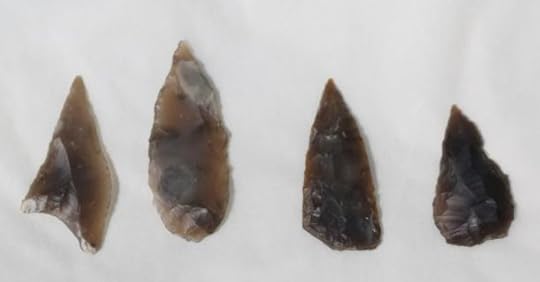 Arrowheads found at the site (University of Reading photo)The house that is being excavated was on a terrace in a small circle of earthen banks. The site had ramparts that researchers think were 3 meters (10 feet) tall that enclosed 15 hectares (37 acres). This is far larger than Avebury, where the stones for Stonehenge came from, and larger than Stonehenge itself. Leary says it was too big for a practical purpose, telling The Guardian it may have been to show off power and wealth in the ability to enlist a large workforce.
Arrowheads found at the site (University of Reading photo)The house that is being excavated was on a terrace in a small circle of earthen banks. The site had ramparts that researchers think were 3 meters (10 feet) tall that enclosed 15 hectares (37 acres). This is far larger than Avebury, where the stones for Stonehenge came from, and larger than Stonehenge itself. Leary says it was too big for a practical purpose, telling The Guardian it may have been to show off power and wealth in the ability to enlist a large workforce.
Also at the site is a previously undiscovered Roman complex that includes the foundations of a barn and a deserted medieval village.
Featured image: Jim Leary, lead archaeologist, with the remnants of the walls and the floor of the ancient home at Marden Henge (University of Reading photo)
 Archaeologists are excavating the remnants of a house up to 4,400-years old on the site of Marden Henge, England, which lies halfway between the World Heritage Sites of Stonehenge and Avebury. Marden, about which little is known, is the largest and one of the most important ancient ceremonial sites in Britain, researchers say. The house is thought to be one of the oldest homes ever unearthed in the country.
Archaeologists are excavating the remnants of a house up to 4,400-years old on the site of Marden Henge, England, which lies halfway between the World Heritage Sites of Stonehenge and Avebury. Marden, about which little is known, is the largest and one of the most important ancient ceremonial sites in Britain, researchers say. The house is thought to be one of the oldest homes ever unearthed in the country."Marden Henge is located on a line which connects Stonehenge and Avebury,” said lead archaeologist Jim Leary in a press release from the University of Reading in England. “This poses some fascinating questions. Were the three monuments competing against each other? Or were they used by the same communities but for different occasions and ceremonies? We hope to find out."
Two amateur archaeologists, Sir Richard Colt Hoare and William Cunnington, dug a shaft into a huge burial mound in the early 1800s. They didn't close the shaft, perhaps meaning to return to it. But the entire mound collapsed, and all that remains there is a 3 cm rise in the ground. A farmer later filled in a moat that had surrounded the barrow.
Henge of the World Elevated Origins: Radical new theory suggests Stonehenge was base of an above-ground celestial altar Fifteen previously unknown monuments discovered underground in Stonehenge landscape
 The site of Marden Henge in Wiltshire (
Snip View
)“Their scrappy records torment the modern archaeologists, including references to animal bones, burned wood, and 'two small parcels of burned human bones,” says The Guardian.
The site of Marden Henge in Wiltshire (
Snip View
)“Their scrappy records torment the modern archaeologists, including references to animal bones, burned wood, and 'two small parcels of burned human bones,” says The Guardian.This latest excavation and research project, which will explore and record the huge site, will take place over three years.
“Built around 2400 BC ‘Marden' is the largest henge in the country and one of Britain's most important but least understood prehistoric monuments,” the Reading press release says. “Excavation within the Henge will focus on the surface of what is thought to be one of the oldest houses in Britain, a Neolithic building revealed during earlier excavations. The people who used this building will have seen Stonehenge in full swing, perhaps even helped to haul the huge stones upright.”
Peary is quoted in the press release as saying: “This excavation is the beginning of a new chapter in the story of Stonehenge and its surrounds. The Vale of Pewsey is a relatively untouched archaeological treasure-chest under the shadow of one of the wonders of the world. Why Stonehenge was built remains a mystery. How the giant stones were transported almost defy belief. It must have been an astonishing, perhaps frightening, sight. Using the latest survey, excavation and scientific techniques, the project will reveal priceless insight into the lives of those who witnessed its construction.”
 Some of the standing stones at Avebury (Photo by Jim Champion/
Wikimedia Commons
)As part of Britain's national festival of archaeology, visitors will be allowed to tour the site on July 18. They will see one of the best-preserved homes from that period of about 4,400 years ago, says The Guardian.
Some of the standing stones at Avebury (Photo by Jim Champion/
Wikimedia Commons
)As part of Britain's national festival of archaeology, visitors will be allowed to tour the site on July 18. They will see one of the best-preserved homes from that period of about 4,400 years ago, says The Guardian.“The house and other parts of the huge site have already produced finds, including beautifully worked flint arrowheads and blades, decorated pottery including some pieces with the residue of the last meals cooked in them, shale and copper bracelets and a beautiful little Roman brooch – and the tiny jawbone of a vole. Analysis of the mass of seeds and charred grains recovered will reveal what the people were growing and eating,” says the The Guardian. “Pig bones – probably the remains of at least 13 animals, food for hundreds of people – and scorch marks from a charcoal firepit suggest the house was never a permanent residence but connected with great gatherings for feasts. When it was abandoned the entire site, pig bones and all, was cleaned and neatly covered with earth, so it would never be used again.”
 Arrowheads found at the site (University of Reading photo)The house that is being excavated was on a terrace in a small circle of earthen banks. The site had ramparts that researchers think were 3 meters (10 feet) tall that enclosed 15 hectares (37 acres). This is far larger than Avebury, where the stones for Stonehenge came from, and larger than Stonehenge itself. Leary says it was too big for a practical purpose, telling The Guardian it may have been to show off power and wealth in the ability to enlist a large workforce.
Arrowheads found at the site (University of Reading photo)The house that is being excavated was on a terrace in a small circle of earthen banks. The site had ramparts that researchers think were 3 meters (10 feet) tall that enclosed 15 hectares (37 acres). This is far larger than Avebury, where the stones for Stonehenge came from, and larger than Stonehenge itself. Leary says it was too big for a practical purpose, telling The Guardian it may have been to show off power and wealth in the ability to enlist a large workforce.Also at the site is a previously undiscovered Roman complex that includes the foundations of a barn and a deserted medieval village.
Featured image: Jim Leary, lead archaeologist, with the remnants of the walls and the floor of the ancient home at Marden Henge (University of Reading photo)
Published on July 15, 2015 08:56
History Trivia - The Rosetta Stone discovered
July 15
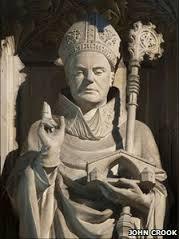
971 Saint Swithin, the Bishop of Winchester, was reburied inside his cathedral. The day is celebrated in England as Saint Swithin's Day.
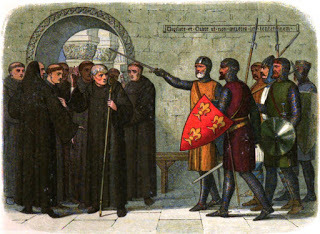
1207 King John of England expelled Canterbury monks for supporting Archbishop Stephen Langton.
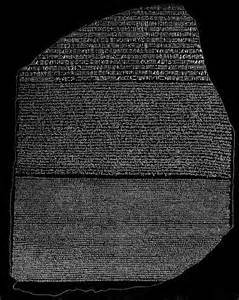
1799 The Rosetta Stone, the key to the translation of hieroglyphs, was discovered in Egypt by a French soldier.

971 Saint Swithin, the Bishop of Winchester, was reburied inside his cathedral. The day is celebrated in England as Saint Swithin's Day.

1207 King John of England expelled Canterbury monks for supporting Archbishop Stephen Langton.

1799 The Rosetta Stone, the key to the translation of hieroglyphs, was discovered in Egypt by a French soldier.
Published on July 15, 2015 01:00
July 14, 2015
Medieval Festival:Tournament and Joust Kenilworth Castle and Elizabethan Garden UK July 18 and 19 2015
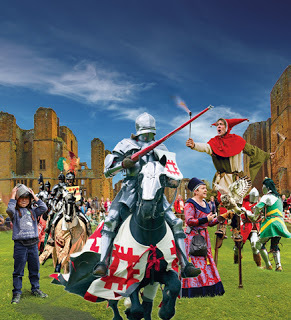 Medieval Festival: Tournament and JoustDateSat 18 & Sun 19 Jul 2015
Medieval Festival: Tournament and JoustDateSat 18 & Sun 19 Jul 2015Time11am - 5pmLocationKenilworth Castle and Elizabethan Garden
Suitable ForEveryone
Trumpets will sound, knights will clash and history will spring to life as the Medieval Festival of Tournaments and Joust comes to Kenilworth Castle.
The brand new Medieval Festival is English Heritage’s greatest medieval celebration, bringing together the very best bits from events all over the country in one almighty weekend. With a cast of hundreds, and a full-throttle programme of knightly combat, it will also be Kenilworth Castle’s biggest medieval event in centuries.
An authentic medieval joust and knights’ tournament are at the heart of the festival. Teams of knights and squires will compete in challenges of skill and strength in spectacular arena shows in this fast-paced sporting event. This is a real competition with pride and victory at stake.
With hundreds of medieval characters setting up camp in the castle grounds, there’s much more to the weekend than armour-clad competition. Expect jesters, falconry, live music, encampments of medieval townsfolk in every area of the castle, hobby horse jousting for young (and young at heart) knights, authentic food and drink, a bustling medieval marketplace and more historic fun and games than ever before.
Timetable of events:
10.30am: Medieval Music
10.30am: ‘Art with Attitude’ - The modern history of Armour. A chance to handle real armour in our own Armour Antique Roadshow
11.00am: School for Fools - Learn some of the tricks of how jesters used to keep their masters and mistresses laughing with our resident Jester
11.00pm: Team Tourney - Which team will come out on top in this first bout of the Knights on foot tournament?
11.30am: Archery – see the soldiers display their prowess with bow and arrow as they compete for glory
11.30pm: Medieval Music
12.00pm: The Arming of the Knights (Kids Zone)
12.00pm: Single Combat Tournament - A series of individual challenges will test the competitors’ skills in poleaxe, spear and swordsmanship
12:30pm: Medieval Falconry Display
1.10pm: The Grand Medieval Joust - Watch this thrilling display of no-holds-barred medieval combat. Afterwards, have your flags signed by the knights!
2.00pm Drill & Firepower – See the knights practice with the revolutionary weapons of the 15th Century
2.00pm Nought ‘Twixt the Ears’ - Meet Peterkin the Fool
2.30pm ‘Art with Attitude’ - The modern history of Armour. A chance to handle real armour in our own Armour Antique Roadshow.
2.30pm Medieval Falconry Display
3.00pm The Arming of the Knights (Kids Zone)
3.00pm Pell Mell - see all the foot teams take to the battlefield in one final mass Pell Mell
3.30pm ‘Fe Fi Fo Fire Show!’ - Half an hour of serious silliness. Combining stilts, fire and the fool, Peterkin – what could go wrong?!
4.10pm The Grand Medieval Joust - Watch this thrilling display of no-holds-barred medieval combat. Afterwards, have your flags signed by the knights!
5.00pm Medieval Music
Kids' Zone activities, running throughout the day.
- Junior Jousting – Budding knights & princesses take attempts to hit the quintain
- At full tilt – our adults version of junior jousting!
- Mini Melee – To arms! Test your knightly prowess against other chivalric foes in our lively children’s foot tournament
- Have a go Archery. Do you have a strong arm? Find out with our have a go archery and discover your prowess as you take up a bow and arrow and take aim. £1 for 3 arrows
- Sunday only: Theatrical Wounds – have gory gashes and festering wounds applied to see injuries brought to life by the Royal Shakespeare Company’s make-up artists
(Kids' activities above are included in the admission price, with the exception of Have a go Archery, which is £1 for 3 arrows)
Also, throughout the day:
- Living History. Meet a cast of hundreds as the tourament's Medieval followers come to Kenilworth to cheer on their champion and set up their encampments in the castle grounds. Be sure of a warm welcome as you explore their camps and step back in time. The medieval townsfolk, with craftsmen and cooks hard at work, will be sleeping, eating, and entertaining in authentic medieval style
- A spot of retail therapy. At the medieval marketplace you will discover the best, authentically recreated, historic wares for sale. From baskets to beads, and buckles to boots, this will be the perfect place to take home some medieval inspiration. Don’t forget to visit the English Heritage shop for treats to take home too!
- Delicious Festival Fare. No family friendly festival is complete without a feast of tempting treats to try. Hungry time-travellers will be able to enjoy medieval recipe cakes and biscuits, delicious deep filled pies, jerkies and condiments, alongside a tipple of cider, beer and cordials. There will also be take away food kits so you can bake your own historic delicacies at home. Enjoy more tasty fare at the Stables Tearoom or grab something at one of the Food Stalls as you head to the Kings’ Arena
Parking Notice: Please note that a Park & Ride service will be running throughout the weekend. The main castle car park will be reserved for disabled parking only. Please follow the AA signs to the Park & Ride, which is located at Thickthorn Field, Kenilworth, on the A452, just off the A46. Please note that disabled parking will also be available at the Park & Ride and all park and ride busses will have disabled access. Please also note that the small car park at the rear of the castle, opposite the Queen & Castle pub, will be closed over the weekend of the Medieval Festival. For further information, please contact the castle on 01926 852078.
PricesTypePriceMember (Adult)£3.40Member (Child)£2.00Member (Concession)£3.00Member (Family)£9.00Adult£13.00Child, 5-15 years£7.80Concession£11.60Family£34.00
Published on July 14, 2015 08:11
Medieval Festival:Tournament & Joust Kenilworth Castle and Elizabethan Garden UK July 18 and 19 2015
 Medieval Festival: Tournament & JoustDateSat 18 & Sun 19 Jul 2015
Medieval Festival: Tournament & JoustDateSat 18 & Sun 19 Jul 2015Time11am - 5pmLocationKenilworth Castle and Elizabethan Garden
Suitable ForEveryone
Trumpets will sound, knights will clash and history will spring to life as the Medieval Festival of Tournaments and Joust comes to Kenilworth Castle.
The brand new Medieval Festival is English Heritage’s greatest medieval celebration, bringing together the very best bits from events all over the country in one almighty weekend. With a cast of hundreds, and a full-throttle programme of knightly combat, it will also be Kenilworth Castle’s biggest medieval event in centuries.
An authentic medieval joust and knights’ tournament are at the heart of the festival. Teams of knights and squires will compete in challenges of skill and strength in spectacular arena shows in this fast-paced sporting event. This is a real competition with pride and victory at stake.
With hundreds of medieval characters setting up camp in the castle grounds, there’s much more to the weekend than armour-clad competition. Expect jesters, falconry, live music, encampments of medieval townsfolk in every area of the castle, hobby horse jousting for young (and young at heart) knights, authentic food and drink, a bustling medieval marketplace and more historic fun and games than ever before.
Timetable of events:
10.30am: Medieval Music
10.30am: ‘Art with Attitude’ - The modern history of Armour. A chance to handle real armour in our own Armour Antique Roadshow
11.00am: School for Fools - Learn some of the tricks of how jesters used to keep their masters and mistresses laughing with our resident Jester
11.00pm: Team Tourney - Which team will come out on top in this first bout of the Knights on foot tournament?
11.30am: Archery – see the soldiers display their prowess with bow and arrow as they compete for glory
11.30pm: Medieval Music
12.00pm: The Arming of the Knights (Kids Zone)
12.00pm: Single Combat Tournament - A series of individual challenges will test the competitors’ skills in poleaxe, spear and swordsmanship
12:30pm: Medieval Falconry Display
1.10pm: The Grand Medieval Joust - Watch this thrilling display of no-holds-barred medieval combat. Afterwards, have your flags signed by the knights!
2.00pm Drill & Firepower – See the knights practice with the revolutionary weapons of the 15th Century
2.00pm Nought ‘Twixt the Ears’ - Meet Peterkin the Fool
2.30pm ‘Art with Attitude’ - The modern history of Armour. A chance to handle real armour in our own Armour Antique Roadshow.
2.30pm Medieval Falconry Display
3.00pm The Arming of the Knights (Kids Zone)
3.00pm Pell Mell - see all the foot teams take to the battlefield in one final mass Pell Mell
3.30pm ‘Fe Fi Fo Fire Show!’ - Half an hour of serious silliness. Combining stilts, fire and the fool, Peterkin – what could go wrong?!
4.10pm The Grand Medieval Joust - Watch this thrilling display of no-holds-barred medieval combat. Afterwards, have your flags signed by the knights!
5.00pm Medieval Music
Kids' Zone activities, running throughout the day.
- Junior Jousting – Budding knights & princesses take attempts to hit the quintain
- At full tilt – our adults version of junior jousting!
- Mini Melee – To arms! Test your knightly prowess against other chivalric foes in our lively children’s foot tournament
- Have a go Archery. Do you have a strong arm? Find out with our have a go archery and discover your prowess as you take up a bow and arrow and take aim. £1 for 3 arrows
- Sunday only: Theatrical Wounds – have gory gashes and festering wounds applied to see injuries brought to life by the Royal Shakespeare Company’s make-up artists
(Kids' activities above are included in the admission price, with the exception of Have a go Archery, which is £1 for 3 arrows)
Also, throughout the day:
- Living History. Meet a cast of hundreds as the tourament's Medieval followers come to Kenilworth to cheer on their champion and set up their encampments in the castle grounds. Be sure of a warm welcome as you explore their camps and step back in time. The medieval townsfolk, with craftsmen and cooks hard at work, will be sleeping, eating, and entertaining in authentic medieval style
- A spot of retail therapy. At the medieval marketplace you will discover the best, authentically recreated, historic wares for sale. From baskets to beads, and buckles to boots, this will be the perfect place to take home some medieval inspiration. Don’t forget to visit the English Heritage shop for treats to take home too!
- Delicious Festival Fare. No family friendly festival is complete without a feast of tempting treats to try. Hungry time-travellers will be able to enjoy medieval recipe cakes and biscuits, delicious deep filled pies, jerkies and condiments, alongside a tipple of cider, beer and cordials. There will also be take away food kits so you can bake your own historic delicacies at home. Enjoy more tasty fare at the Stables Tearoom or grab something at one of the Food Stalls as you head to the Kings’ Arena
Parking Notice: Please note that a Park & Ride service will be running throughout the weekend. The main castle car park will be reserved for disabled parking only. Please follow the AA signs to the Park & Ride, which is located at Thickthorn Field, Kenilworth, on the A452, just off the A46. Please note that disabled parking will also be available at the Park & Ride and all park and ride busses will have disabled access. Please also note that the small car park at the rear of the castle, opposite the Queen & Castle pub, will be closed over the weekend of the Medieval Festival. For further information, please contact the castle on 01926 852078.
PricesTypePriceMember (Adult)£3.40Member (Child)£2.00Member (Concession)£3.00Member (Family)£9.00Adult£13.00Child, 5-15 years£7.80Concession£11.60Family£34.00
Published on July 14, 2015 08:11



